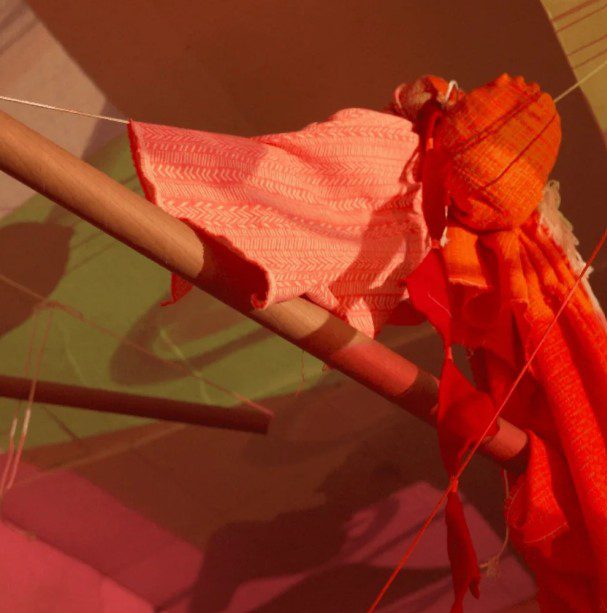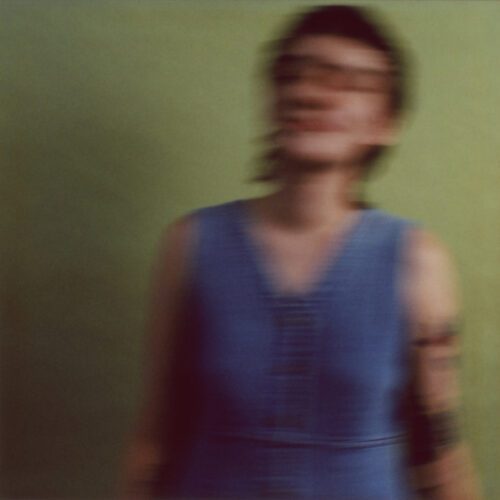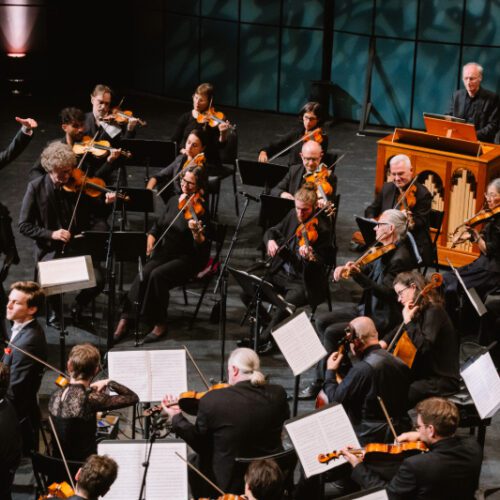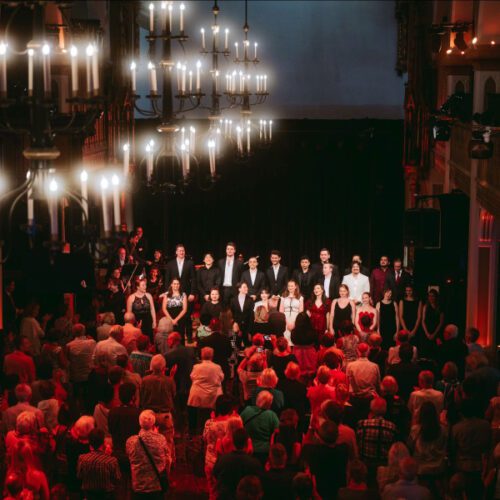The concept of teru teru bōzu, small handmade dolls hung from windows to ward off rain in Japan, carries a rich symbolism oscillating between care, hope and control. Teru Teru, a world premiere at the Sight + Sound 2025 Festival presented at Eastern Bloc, seizes on this tradition to offer a choreographic and sonic exploration of the management of care in a world of perpetual uncertainty. Hanako Hoshimi-Caines and Hanako Brierley draw on these symbols to create a performance where intimacy meets ritual, where the past dialogues with the imaginary.
From the very first moments, the stage is inhabited by an ambience that is both gentle and spectral. The scenic device, where two giant-sized teru teru bōzu dolls are placed on the floor in the middle of the room, composes an evocative visual landscape. This set, oscillating between childlike playfulness and a certain ghostly presence, becomes the stage for a captivating sensory exploration. Yet beneath this apparent gentleness lurks a latent tension: the act of hanging a teru teru bōzu is a hopeful prayer, but also a tacit promise of punishment. If the doll fails to make the sun appear, it is condemned to be decapitated.
A vocal interplay between gentleness and tension
Brierley’s sound work accentuates this tension. Through subtle use of vocal looping, she deconstructs the traditional nursery rhyme teru teru bōzu, repeated and superimposed to reveal unsuspected nuances. This sound loop, in which the voice becomes a hypnotic instrument, instills a playful lightness while hovering a diffuse menace. At first childlike and reassuring, this sound treatment gradually transforms into an abstract, almost mechanical litany, devoid of affect.
The vocal dialogue between Hoshimi-Caines and Brierley is part of an organic dynamic in which the voices cross, intertwine and respond to each other. At times, their voices merge into a gentle harmony, evoking an incantatory chant where care takes on a collective dimension. But this gentleness is often interrupted by abrupt silences or vocal shifts that create spaces of tension. Far from being mere pauses, these interruptions become breaths of uncertainty.
Silence as a space of rupture
It is above all in these silences that the performance finds its depth. When the voices fade away, an empty space opens up, inviting us to listen more attentively to the body and the environment. These silences, far from being absences, become moments of suspension where the spectator is confronted with the expectation, vulnerability and risk of failure inherent in ritual. This dialogue between fullness and emptiness gives a particular resonance to the choreographic gestures, where each suspension seems to amplify the fragility of the movements.
A ritual devoid of emotion, a source of tension
Teru Teru explores the tension inherent in ritual, where the repetition of gestures and sounds does not freeze the performance in a rigid mechanic, but infuses it with an organic vitality. The simplicity of the ritual – hanging up a doll in the hope of warding off the rain – is gradually emptied of its affect to become an automatism, a repetition in which emotion fades away to make way for a muted tension. Far from soothing, this emotional stripping makes the dramatic charge more intense, confronting the viewer with the uncertainty of hope hanging by a thread.
With Teru Teru, Hoshimi-Caines and Brierley offer a work of rare delicacy, in which care becomes a living ritual, oscillating between hope, control and abandonment. In this infinite dance of repetition, silence and renewal, the management of care is transformed into a space of expectation, where the tension born of the absence of overt emotion becomes the real driving force behind the performance.
























